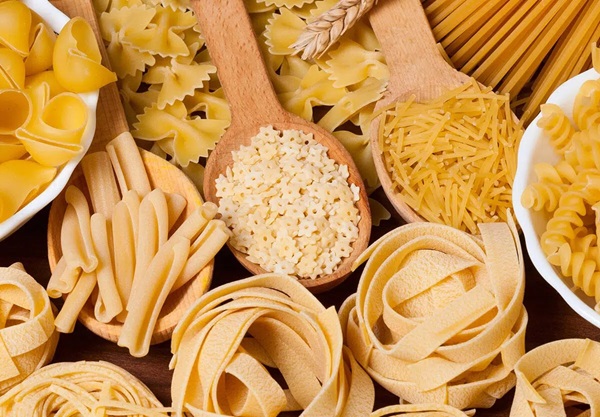National Pasta Day is celebrated every year on October 17. The people who invented pasta knew exactly what they were doing. This simple dish carries centuries of Italian tradition. Every October, we set aside a day to honor this amazing food. Pasta comes in many shapes and sizes, but no matter the type, it’s a dish that almost every American family has enjoyed while growing up.
History of National Pasta Day
Foods like Spaghetti, fettuccini, macaroni, and ravioli: pasta is undeniably one of our favorite comfort foods. However, how did it become so popular in the United States? And where did it originate?
The origins of pasta are somewhat unclear, but many researchers believe that Marco Polo introduced noodles to Italy after returning from a trip to China in 1271. Though this theory paints a picture of discovery and adventure, the stories of Marco Polo’s travels are based on second-hand accounts, which makes their accuracy uncertain.
Even if Marco Polo did introduce pasta to Italy, he was not the first to do so. The pasta was already well-loved in Italy by the early 13th century.
Moreover, some historians have traced the origins of pasta even further back to ancient Etruscan civilizations, who would grind cereals and grains, mix them with water, and create a pasta-like dish.

Additionally, pasta was introduced to America by early Spanish settlers, but it didn’t gain popularity until Thomas Jefferson visited Paris and became fond of macaroni (a term that referred to all types of pasta back then).
Years later, as a wave of Italian immigrants moved to America, pasta became a staple and easily accessible dish in the United States.
| 400s (First Mentions of Pasta) | Pasta is produced in large quantities in Palermo. |
| 1600s (Pasta Becomes a Staple) | In Naples, people became vociferous macaroni-eaters. |
| 1740 (First Pasta Factory Opened) | Paolo Adami opened it in Venice, Italy. |
| The late 1700s (First Mentions of Red Sauce) | The first mention of tomato sauce was in a 1790 cookbook called L’Apicio Moderno. |
| 1914 (Artificial Pasta Drying Invented) | The process of creating dry pasta allowed it to be widely available in Italy. |
Five Interesting Facts About Pasta
- Origins and Evolution: Pasta’s origins are often associated with Italy, but its history is more complex. Ancient civilizations like the Etruscans and Romans made early forms of pasta from wheat and water. While it’s a common myth that Marco Polo brought pasta to Italy from China, evidence suggests that pasta already existed in Italy before his travels.
- World Pasta Day: Celebrated on October 25th each year, World Pasta Day was established in 1995 during the World Pasta Congress in Rome. The day is dedicated to celebrating the cultural and culinary significance of pasta around the world, with events, tastings, and pasta-related activities.
- Variety of Shapes: There are over 600 different shapes of pasta, each designed to pair with specific types of sauces or cooking methods. For example, long, thin pasta like spaghetti is often paired with light, smooth sauces, while ridged pasta like rigatoni is perfect for holding onto chunky, hearty sauces.
- The Science of Al Dente: “Al dente,” an Italian term meaning “to the tooth,” describes pasta cooked to be firm when bitten. Cooking pasta al dente is not only a matter of taste but also of health. Pasta cooked this way has a lower glycemic index compared to overcooked pasta, meaning it causes a slower, more controlled release of glucose into the bloodstream.
- Pasta Consumption: Italy holds the title for the highest per capita pasta consumption, with the average Italian consuming about 25 kilograms (55 pounds) of pasta each year. However, pasta is enjoyed worldwide, with countries like the United States, Brazil, and Germany also being significant consumers.
Conclusion
National Pasta Day is more than just a celebration of a beloved dish; it’s a tribute to the rich history and cultural significance of pasta that has traveled across continents and centuries. From its ancient beginnings with the Etruscans to its establishments as a staple in Italian and American kitchens, pasta’s journey is as diverse as its many shapes and flavors. As we enjoy a plate of our favorite pasta on October 17, we honor not only the delicious simplicity of this comfort food but also the generations of tradition and innovations that have made it a global culinary icon. Whether you prefer your pasta al dente with a light sauce or loaded with hearty flavors, National Pasta Day is the perfect time to indulge in this timeless dish that continues to bring joy to tables around the world.
Frequently Ask Question
When did pasta first become popular in the United States?
Pasta gained popularity in the United States during the late 1700s and early 1800s, particularly after Thomas Jefferson introduced macaroni (a term then used for all types of pasta) to the American public following his trip to Paris.
Did Marco Polo introduce pasta to Italy?
While a popular myth suggests that Marco Polo introduced pasta to Italy after his travels to China in 1271, evidence indicates that pasta already existed in Italy long before his return. The Etruscan civilizations, as early as the 13th century, were already making pasta-like dishes.
Where did pasta originate?
Pasta’s origins are often attributed to Italy, but its history is more complex. Early forms of pasta were made by ancient civilizations like the Etruscans and Romans, who ground cereals and grains, mixed them with water, and formed pasta-like dishes.
You may also like to read, Yorkshire Pudding Day – October 13, 2024
